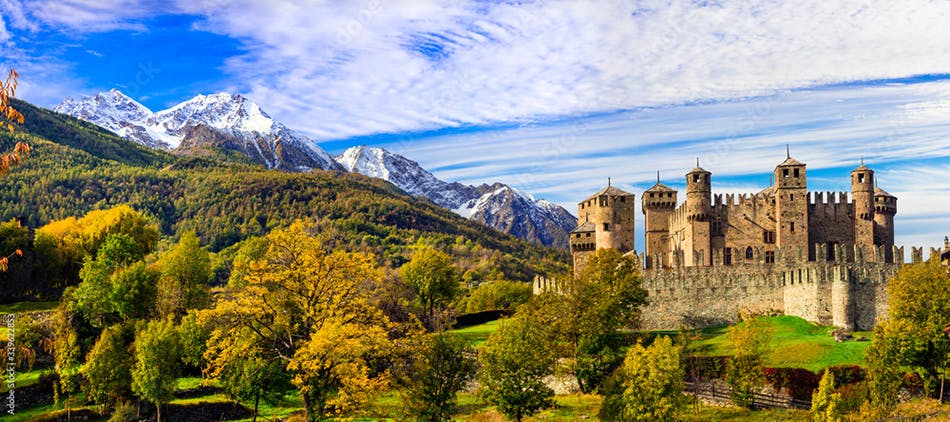"The only oil used in the kitchens of Valle d'Aosta is butter!"
Known for its iconic snow-capped peaks, Valle d'Aosta is a northwestern region in Italy on the border of France and Switzerland. This ski lover's paradise is studded with medieval castles in its green valleys (in the warm months) and high-altitude hiking trails. While it is the smallest and least populated region in Italy, its natural beauty is one for the record books with some of the tallest peaks in Europe: Monte Bianco (Mont Blanc in French), the Matterhorn, Monte Rosa, and Grand Paradiso. With cattle and dairy as a huge part of their local economy, expect hearty comfort classics like creamy polenta, gooey fonduta, and plenty of soups and stews.

Since the 4th century BC, Valle d’Aosta was inhabited by the Celtic Salassi people until they were conquered by the Romans in 25 BC. It is easy to see remnants of this history in the capital city Aosta, nicknamed “Little Rome of the Alps,” with the extraordinary wealth of archaeological sites from Roman times, including the Arch of Augustus, Porta Pretoria, and the Roman Theater once holding 3 to 4 thousand spectators.
After the fall of the western Roman empire in the 5th century, this area formed part of Burgundian and Frankish kingdoms until it was acquired by the House of Savory (the future royal house of Italy!) in the 11th century. Valle d’Aosta was made an autonomous region in 1945, with recognition of the French linguistic and cultural influence in the area.

Today, Valle d’Aosta is a melting pot of culture. Bordering Piemonte, Switzerland, and France, this region has a unique cuisine unlike any other Italian region. The Alpine territory is characterized by staggering cliffsides, glaciers, lakes, thick woods, and pastures, with traditional villages sparsely dotted throughout the landscape. This isolation means the people of Valle d’Aosta have become experts at preserving their food, resulting in regional salumi and formaggio delicacies, the most famous being Fontina DOP. Beef is the go-to meat in the region. While there is still some goat and pig farming, most of the salumi and formaggio feature cuts of beef or cow’s milk.

The harsher climate also meant that wheat could not survive as easily in Valle d’Aosta. Instead, corn became the staple for both the rich and poor in the form of polenta (with varying amounts of butter, cheese, and sauces added). Valle d’Aosta is also the only region in Italy where olive oil is not produced. Tucked away in the Alps, this area is too far from the warming Mediterranean Sea. Butter instead is the main cooking fat, along with hot-pressed walnut oil (producing a now-considered delicacy of hazelnut paste called troillet).

Curious about more of the flavors of this unique region? Check out our Tastes of Valle d’Aosta article to learn about Fontina DOP, pan ner, polenta concia, Seupa à la Vapelenentse, and other regional specialties.